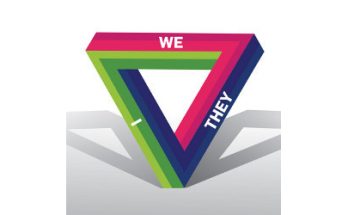“Potential ‘Dark Sides’ of Leisure Technology Use in Youth”
Communications of the ACM, March 2019, Vol. 62 No. 3, Pages 24-27
Economic and business dimensions
By Ofir Turel
“Many of the technologies we develop can also be harmful, especially when used excessively.”
Computing technology has produced many societal benefits. Nevertheless, it often serves as a double-edged sword and promotes negative consequences, such as distraction, addiction, time waste, and reduced well-being. This is perhaps not surprising given that “When you invent the ship, you also invent the shipwreck … Every technology carries its own negativity, which is invented at the same time as technical progress.” Indeed, many computing technologies follow this pattern, exhibiting a duality of “bright” and “dark” effects on people, firms, and societies. The problem is that the understanding of downsides of technology sometimes lags our understanding of upsides. We, especially technology enthusiasts, are often enchanted by the abundant positive things new technologies can do, and this dilutes our ability to develop reliable judgments regarding the harms new technologies can cause.
While studies of both positive and negative technology effects on children and youth exist, trends in technology use among youth and their possible adverse associations are less well explored. It is important to examine and discuss such trends given the lack of regulation of technology use and the limited awareness to possible technology use harms. By contrast with other harmful materials and behaviors (for example, using illicit substances, consuming junk food, not wearing seatbelts), the use of computing technologies is largely unregulated and many parents and children may not be aware of the extent of harm that may be associated with excessive use of technology. Hence, analyzing such trends can serve as a springboard for initiating a healthy discussion in our discipline regarding possible “dark side” effects of computing technologies on youth, and more broadly speaking, developing a more balanced discussion regarding the effects of technologies on societies. Increasing awareness to such issues and sparking this discussion are needed steps before we mobilize resources and develop and test solutions for possible largely unexpected negative effects of technology use on youth.
Here, I seek to shed light on technology use trends in youth and examine their parallels with a range of adverse outcomes in the school, social, well-being, and health domains. To achieve this objective, I analyze a large dataset (n=152,172) of survey responses by youth, approximately 13–16 years old, across the U.S. This data is drawn from an annual (2012–2016) survey administered to hundreds of schools.
…
Time for Balanced Reflections on Technology
For many years we have emphasized the positive aspects of computing technologies because we believed in their contribution to humanity. Nevertheless, there is a growing body of evidence in support of a technology duality view. That is to say, we have started realizing and quantifying the notion that many of the technologies we develop can also be harmful, especially when used excessively. While adults can typically understand and deal with such issues, for example, through self-regulation of leisure technology use during work hours, youth often cannot do so as effectively. This difference stems from the idea that their brains are still developing, and the parts of the brain that drive rewarding behaviors develop faster than their brain regions that are involved in self-control.6 It is hence our responsibility to better inform them, their families, and their educators regarding possible risks that may be associated with improper and excessive use of leisure computing technologies. We should also consider whether the leisure computing technologies we develop should allow users to: easily self-track own activity; inform young users and parents when dangerous levels of activity are reached; and restrict/block activities by request.
About the Author:
Ofir Turel is a professor of Information Systems and Decision Sciences at California State University, Fullerton, and a scholar in residence at the decision neuroscience lab at the University of Southern California.






